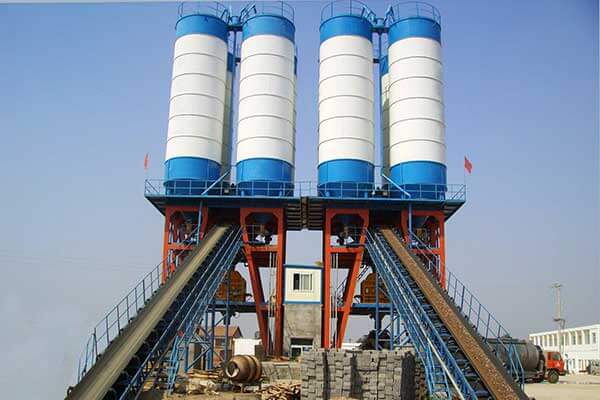[lwptoc skipHeadingLevel="h1,h4,h5,h6"]
Introduction for cement silo
When buying a cement silo for sale, you must consider several factors. A cement silo is an integral part of your cement plant because it helps you store the product and transport it easily. The size of the silo depends on the plant and capacity requirement, the number of types to be used, the plant's location, transport facility availability, and ease of installation and disassembly requirements. Other factors include portability requirements for different sites and maintenance and servicing needs.

Transport for cement silo
Transport facility availability (e.g., by sea, railway line, or road) and ease of installation and disassembly are also essential factors that must be considered in choosing a cement silo for your site. If you want to save space, choose Bolted Cement Silo.
Number of cement silo
A cement silo is not only used to store cement; it can also keep other powdery materials; when you have a variety of materials, you can also choose more than one cement silo.
If you have different types of cement to store, you will need a separate cement silo of each kind. It is not possible to mix other adhesives in the same silo; they must be separated. For example, if you use both Portland and fly ash cement, you would need two silos for each type of cement. If, however, all your glue is the same (for example, if all your products are Portland), it makes sense to store them together in one concrete silo as this reduces costs by eliminating wasted storage space in multiple smaller units.
Location of the cement silo plant
When choosing a location for your cement silo, there are several factors to consider. The first is transportation. Your plant should be located in an area with good transit, such as railroads and highways, that can bring raw materials and deliver a finished product. Other important factors include the availability of power and water. The closer you are to these resources, the more cost-effective your business will be for running smoothly.
Transport facility availability
The availability of a transport facility is an integral part of any project. Whether you're shipping cement by rail, truck, or ship, it's essential that the transportation method you choose has a low carbon footprint and is cost-effective.
Ease of installation and disassembly
The silo must be easy to assemble and disassemble, as well as transport, maintain, service and repair. The fact that all components must fit together tightly is essential if it is to work correctly.
Portability requirement for different sites
If you need to move the silo frequently to different sites, a mobile cement silo will be your best option. It's also helpful if there's a chance that the site will change in the future and you want to be able to move it then.
If you're planning on moving once but not often, go with a fixed silo. This type is less expensive than other options because it requires less material and labor, but they're still sturdy enough to last through several moves if necessary. However, suppose you don't have any plans for relocation or have no reason to think your location might change anytime soon. In that case, a fixed cement silo may not be worth it—the added cost won't make up for what little convenience they offer most users over some other styles of cement storage units.
Maintenance and servicing of cement silo
The first thing you should do when you buy a cement silo is to make sure it’s easy to access for maintenance and servicing. The silo should be able to be accessed from the ground or by a ladder. It’s also important that there are no sharp-edged surfaces that could cause injury during cleaning of the inside of your cement silo.
Cement silos need regular cleaning, so proper maintenance is essential for ensuring your safety and preventing waste levels from reaching dangerous heights in your storage facility.
Durability factors
The durability of a cement silo depends on the material used and how it’s designed. It also depends on the quality of manufacturing, maintenance, and installation. These factors can make or break your investment in a cement silo.
There are several factors to consider before buying a cement silo for sale. These include the type of plant and its capacity requirement, the number of cement types that will be used, location of the plant and availability of transport facility, ease of installation and disassembly requirements based on portability requirement for different sites.
Conclusion
Buying a cement silo is a big investment. If you want to make sure that you are getting the best product for your money, it’s important that you consider all of these factors before making any decisions. We hope this article has helped in making this decision easier for you!